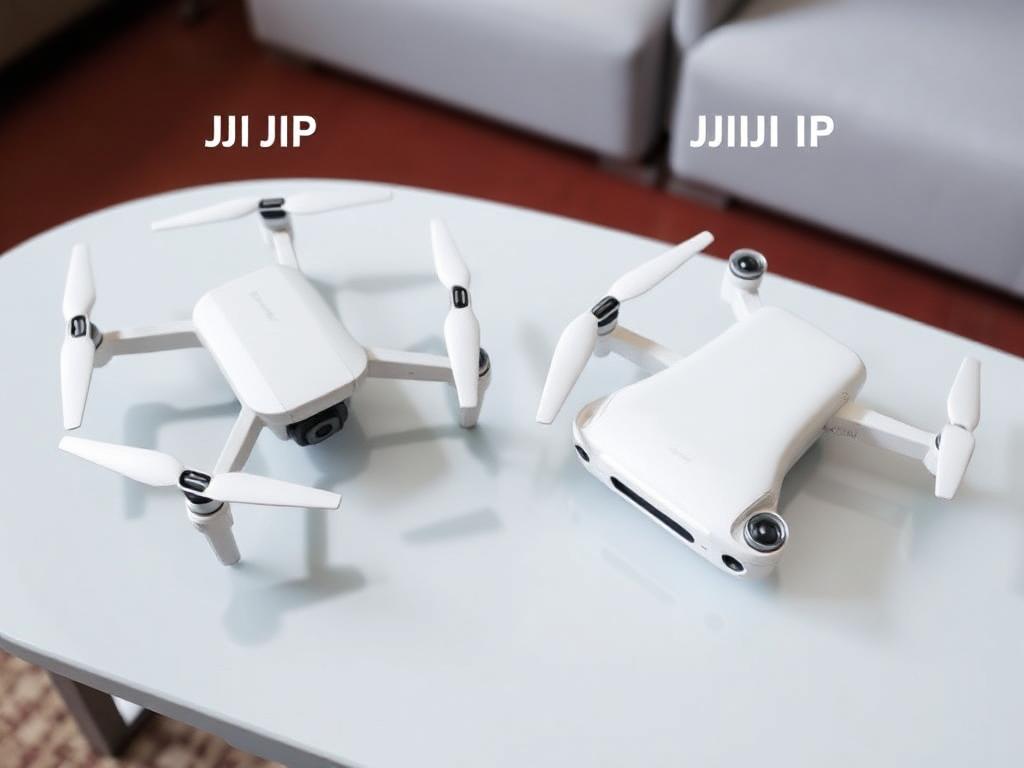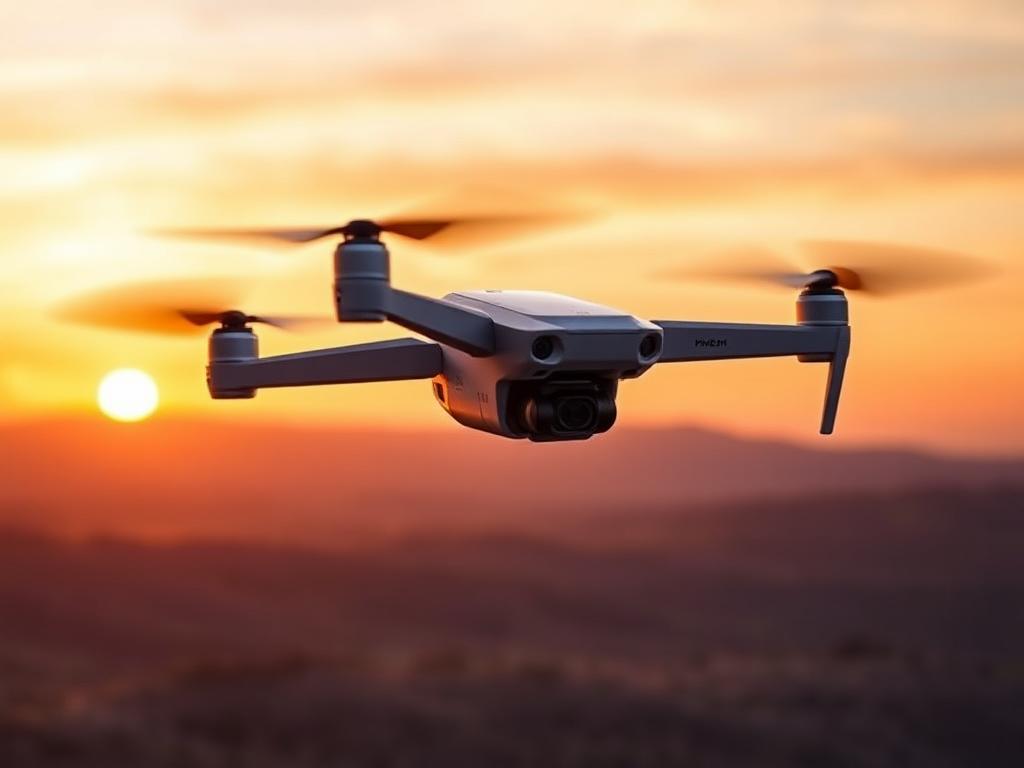The drone market is constantly evolving, and DJI, a leader in the industry, has consistently pushed the boundaries of innovation. The latest addition to their lineup, the DJI Flip, is making waves with its unusual design and promises of a user-friendly flight experience for newcomers. This first-of-its-kind drone is not just another iteration; it’s a departure from traditional quadcopter designs, aiming to redefine the beginner drones category. The DJI Flip signals an interesting shift in expectations for entry-level aircraft, but does it deliver on its promises? This article explores its unique features, performance, and potential impact on the future of drones.

Meet the DJI Flip: A Revolutionary Design in the Drone World
Breaking away from the conventional four-rotor design, the DJI Flip embraces a unique form factor designed for easy flight and enhanced safety. This innovative drone design features a transformable body and protective cage that sets it apart from other DJI offerings. Unlike the sleek, exposed designs of its predecessors, the DJI Flip looks a bit like a futuristic flying sphere, emphasizing safety and ruggedness for beginners. This makes it an intriguing candidate for a drone for first-time users. This bold design move is something to discuss among drone technology trends enthusiasts.
What Sets the DJI Flip Apart: Key Features and Specifications
To understand the hype surrounding the DJI Flip, let’s delve into its core features and specifications:
| Feature | Specification |
|---|---|
| Design | Transformable body with a protective cage |
| Weight | Approx. 300 grams |
| Flight Time | Up to 20 minutes |
| Camera | 12MP Camera, 1080p Video |
| Connectivity | Wi-Fi |
| Range | Up to 100 meters |
| Control | Smartphone app |
| Safety Features | Propeller guards, obstacle avoidance |
A Closer Look at the Innovative Flipping Mechanism
The device earns its name from the “flip” feature, a unique mechanism that allows the drone to transform between a compact storage mode and a flight-ready orientation. This mechanism is not just a visual gimmick; it reduces the drone’s footprint when not in use and helps protect the rotors during transport making it a good choice for DJI beginner drones. The actual flipping involves a simple unfolding of the protective cage around the internal body, which means less setup time for first-time flyers.

Ease of Use: Is the DJI Flip Truly Beginner-Friendly?
One of the primary goals of the DJI Flip is to be incredibly accessible for first-time drone pilots. Here’s what makes it potentially beginner-friendly:
- Simplified Controls: The drone is primarily controlled through a smartphone app, offering an intuitive interface.
- Automated Flight Modes: Features like auto-takeoff and landing reduce the complexity of initial flights.
- Obstacle Avoidance: Protective cage and obstacle detection technology make the drone safer to operate, even for beginners.
- Durable Construction: The caged design makes it more robust and less likely to get damaged in minor collisions.
Performance Test: Flight, Stability, and Camera Quality
While the design and ease of use are important, the true test is in the drone’s performance. Here’s what we found in testing:
- Flight: The drone is responsive to commands, offering a stable and relatively smooth flight experience, especially in calm conditions.
- Stability The protective cage adds stability but can be impacted more by windy conditions making outdoor use a bit more challenging.
- Camera Quality: The camera is adequate for basic aerial photography and video. The 1080p video is sufficient for casual use but lacks the crispness of higher-end models.

Strengths of the DJI Flip: What It Gets Right
The DJI Flip does excel in some key areas:
- Unique and fun design: It’s a visually distinct drone that sparks curiosity and offers great usability for new users.
- Exceptional Portability: The folding design makes it convenient to carry around and store with the safety of the protective cage.
- User-Friendly Interface: The smartphone app is easy to navigate, making it simple to start flying.
- Solid Construction: The protective cage is a key selling point, as it minimizes damage during those inevitable beginner bumps.
Where the DJI Flip Falls Short: Potential Pitfalls
Despite its innovations, the DJI Flip isn’t without its drawbacks:
- Limited Flight Time: The 20-minute flight time might not satisfy those wanting longer aerial sessions.
- Basic Camera Quality: While suitable for beginners, the image quality is not on par with higher-tier DJI drones.
- Range: The 100-meter range can be limiting.
- Wind Sensitivity: The lightweight and more rounded design can be more easily impacted by wind.
The Future of Beginner Drones: Can the DJI Flip Lead the Way?
The DJI Flip, its bold design and focus on safety positions it as a contender to define the future of drone innovation in 2025. Its accessible design and focus on user ease are likely to become a common trend within the beginner drone sector as manufacturers aim to lower the barrier to entry. However, if DJI is to lead this trend it will need to evolve the camera quality and offer a much better flight time.

Final Verdict: Is the DJI Flip a Game-Changer or a Gimmick?
“The limits you push give rise to a new world, where the future and the present are one, where what was unimaginable becomes a step forward.” – Toba Beta
The DJI Flip is a bold and interesting new drone that offers a user-friendly entry into the world of aerial flight. As a DJI drone review, it is clear that this drone sets itself apart with its unique design and its focus on safety. However it is important to note that the DJI Flip has trade-offs in performance and camera quality to achieve this. For beginner drone enthusiasts, the DJI Flip is certainly an interesting option. Whether or not it’s a game changer or a gimmick will be decided by how it evolves in its future iterations. At this point, it is a first but will need to continue to evolve.





